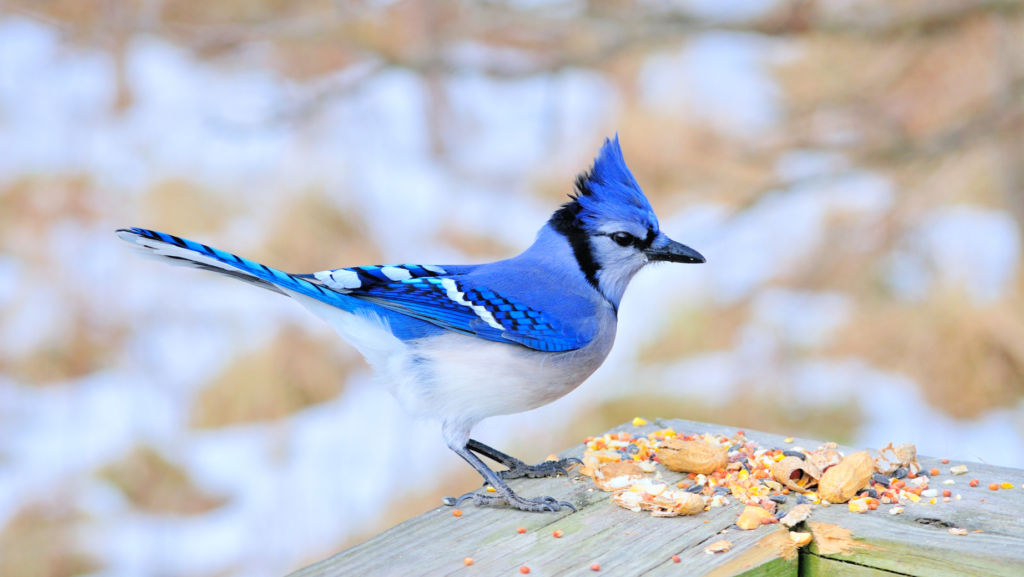The Blue Jay: A Fascinating Journey from Birth to Death

Birth and Early Life
The Blue Jay (Cyanocitta cristata) embarks on life as a delicate nestling, hatching from pale blue or green eggs within the secure confines of its meticulously crafted nest. Nestled in treetops, shrubs, or even ledges, Blue Jay nests are often constructed with twigs, leaves, and other plant materials. The parents, known for their monogamous bonds, share the responsibilities of incubating the eggs and caring for the vulnerable hatchlings.
As hatchlings, Blue Jays are initially featherless and dependent on the care and nourishment provided by their attentive parents. The parents diligently feed the chicks a diet of insects, fruits, and seeds to support their rapid growth and development.
Growth and Transition to Adulthood
As the Blue Jay chicks grow, their once-downy feathers transform into the distinctive blue and white plumage characteristic of adults. The transition from fledgling to adulthood involves honing crucial survival skills, such as foraging for food, identifying potential threats, and navigating their surroundings.
Food plays a pivotal role in their growth, with the Blue Jay’s diet expanding to include a variety of seeds, nuts, fruits, insects, and occasionally small vertebrates. Their remarkable intelligence and adaptability contribute to their success in various habitats, from forests and urban areas to suburban landscapes.
Habitat and Distribution

Blue Jays inhabit a vast range, spanning eastern and central North America. They are commonly found in deciduous and mixed woodlands, parks, gardens, and residential areas. Known for their distinct vocalizations, Blue Jays are often heard before they are seen, with a range of calls and mimicry that adds to the richness of their habitat.
These birds are highly adaptable, displaying a remarkable ability to thrive in diverse environments. While trees are their primary habitat, Blue Jays are known to explore open areas, taking advantage of feeders in backyards and parks.
Reproduction and Nesting Behavior
The Blue Jay’s breeding season typically begins in late March and extends into July. During this time, pairs engage in elaborate courtship displays, solidifying their bond. Nest-building is a joint effort, with the male and female constructing a cup-shaped nest in the fork of a tree or other suitable locations.
After the female lays a clutch of eggs (usually 3 to 7), both parents share the responsibilities of incubation, which lasts about 17 to 18 days. Once hatched, the chicks are cared for by the parents for several weeks until they fledge and begin their journey toward independence.
Death and Predation
Blue Jays, like all living organisms, face various threats throughout their lives. Predation is a significant factor, with nests susceptible to raiding by squirrels, snakes, and other birds. As adults, they remain vulnerable to predation by hawks, owls, and other predators. Disease, accidents, and environmental factors also contribute to mortality rates among Blue Jays.
Conclusion

The life of a Blue Jay is a remarkable journey, marked by intricate nesting behaviors, adaptive survival strategies, and a vibrant presence in diverse habitats. From the delicate beginnings of nestling-hood to the challenges of adulthood and the eventual circle of life, the Blue Jay’s existence adds a colorful dimension to the ecosystems it inhabits. Observing and understanding the life cycle of these charismatic birds sheds light on the interconnectedness and complexity of the natural world.

